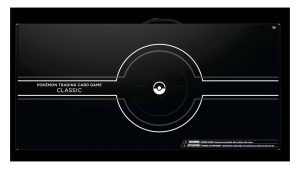Last year, Valve irrevocably changed PC gaming with the launch of Steam Deck. The portable PC platform certainly wasn’t the first effort of its kind, but with Valve’s engineering experience and tight integration with Steam, it quickly became the go-to device for a powerful and reliable gaming experience on the go. The timing couldn’t have been better either, as the Nintendo Switch only saw an OLED upgrade last year, and the many rumors about its specs reduced to another long wait for the successor. As a result, the Steam Deck satisfied the desire for more demanding games in a portable frame, so much so that we suggested it was a turning point for the entire market. But it was probably still surprising how quickly competitors responded, as 2023 offers a glimpse into a future full of compelling PC gaming handhelds, each experimenting in eye-popping ways.
With more expensive components being phased out by both AMD and Nvidia, it’s no surprise that market share for PC gaming has declined over the years. Steam Deck may not have completely fixed this problem, but it’s clear that there’s been a lot more positive sentiment towards PC gaming since its launch, with most releases today including some Steam Deck-specific tweaks and Verification is through Valve’s own certification program. But the easiest way to see its impact on the industry is how quickly it creates intense competition. Asus and Lenovo have both launched their own Steam Deck contenders in 2023 that compete not only in terms of performance but, surprisingly, price as well, giving consumers some thought when choosing the best form factor for PC gaming on the go. do There are other players in the game, most notably Ayaneo with its various devices, but its prices are high enough to put it further out of the question when comparing the three cores. Either way, it shows the willingness of manufacturers to take a risk on an entirely new device, when the market is clearly hungry for more options to choose from.
Size:
Want us to remember this setting for all your devices?
Register or login now!
Please use a browser with html5 video capability to watch the video.
The file format of this video is invalid.
Sorry, but you cannot access this content!
Please enter your date of birth to view this video
By clicking “Sign In”, you agree to GameSpot
Terms of Use And
Privacy Policy
Playing: Introducing Steam Deck OLED – November 16th
The Asus ROG Ally was the first and has certainly established itself as the Steam Deck’s strongest contender with two versions. ROG Ally Z1 Extreme and standard ROG Ally Z1, To choose. Several improvements over Valve’s first effort, along with an aggressive price tag that made it just a hair more expensive, helped give consumers pause over which device to pick up, while providing an option for many of the areas Valve still serves. does not provide ROG Ally’s 1080p variable refresh rate display is an instant draw card, delivering a sharper, more responsive image when running anything from Cyberpunk 2077 to Dave the Diver. Performance has also increased, especially on the more powerful Z1 Extreme ROG Ally, although this higher power consumption for higher frame rates compromises battery life considerably. It’s amazing how Asus managed to produce such a compelling alternative so quickly, but its minor quality assurance issues suggest it was a bit rushed. Aside from a slew of software integration snafus that are still being ironed out to this day, the ROG Ally has revealed a hardware issue with its memory card slot that can cause your microSD card to simply fail during a gaming session. bridge falls It was infuriating for the affected customers. Issues like these are likely to kill the appetite for the device in a disinterested market, but its strong reputation paints a different picture.
this Lenovo Legion Go It’s the youngest of the three (sort of – we’ll get to that soon), but it has a lot in common with the Asus ROG Ally. They both use an AMD Ryzen Extreme Z1 processor in their higher-end SKUs, which both start at $699, while both come with Windows. The Legion Go is able to squeeze in over 20% more battery capacity, but it’s also the heaviest of the three devices by a slight margin. It also has a significantly larger 1600p resolution and 8.8-inch panel, which can feel a bit underwhelming for the hardware it’s paired with. Legion Go’s difference lies strongly in how it’s used. The layout is similar to the Steam Deck and ROG Ally in having the face and thumb buttons on the front of the device, but borrows the idea of separating the left and right sides from the Nintendo Switch. The Nintendo Switch and its many ways to play games have rightly become one of the console’s selling points, and Lenovo Go seems to be hoping that this gimmick will be enough of a differentiating factor in the decision to buy it, especially in vs. accumulation ROG ally. But it still represents a level of experimentation not seen in the PC space for some time, where different manufacturers are all using the same components in different ways to attract a new market that’s hungry for it. The best place for portable gaming
While Lenovo thinks it’s winning the battle on the hardware side, Valve is working on the software side instead. The ROG Ally and Legion Go both come with Windows, which is great for a few reasons. All your standard game launchers work without any fuss, you get access to Xbox Game Pass (which isn’t possible on Steam Deck without Windows installed), and you get a standard Windows experience when you plug it into a monitor. . The downside is that Microsoft hasn’t really invested much in making Windows a seamless experience on these devices, even with touchscreens potentially offloading the controller-hardware elements. Even with custom software layers from Asus and Lenovo trying to do a lot of translating behind the scenes, these devices are much harder to set up and navigate around. It’s not impossible, and there’s certainly nothing more challenging if you’re already used to the numerous troubleshooting headaches that come with PC gaming, but if you’re looking to pick one up expecting a console-like experience, do it. will give Very disappointed now
This is where Valve and Steam Deck are way ahead. Valve worked hard on integrating a custom SteamOS into an existing Linux distro, allowing the company to fine-tune the user experience. At first this was promising, but lacked support, as several games wouldn’t load through Valve’s software translation layer, which was mostly required to run. In the year and a little since, things have greatly improved, to the point where it’s less about which games work and more about the few that still don’t (and in the case of some online titles, They probably never do. Better yet, Valve hasn’t slowed down on updates, and over the months has released numerous improvements to SteamOS and Steam Deck that have greatly improved stability and even added new features for users. Last year, we praised the Steam Deck for creating the perfect crossover between those looking for a portable PC console and others looking for a fixer-upper, and Valve hasn’t compromised in either way since.
In fact, Valve recently released a surprise update to the Steam Deck, introducing several models (including a new 1TB version), all with much-improved OLED displays and thinner bezels. Valve did this while keeping the same price as the original LCD-based version, instead lowering the price of those models even further. Valve also took the opportunity to reconfigure some of the internals, improve battery life, and upgrade the Wi-Fi chip inside for better compatibility with newer routers. Performance hasn’t changed much – an aspect that may be disappointing in the wake of the challenge posed by the ROG Ally and Legion Go – but the aforementioned benefits in terms of usability and integration with Steam still make the Steam Deck a great device. slow down opponent to go against
However, other manufacturers will have that chance in the next few years. Valve has reaffirmed its commitment to the Steam Deck and the format that made it so popular, stating that a suitable successor is still a few years away before the processing power behind the Deck can meaningfully evolve. That doesn’t mean companies like AMD will stop innovating on their mobile chips, and new competition from Asus, Lenovo, and whoever else decides to jump in to maybe outdo Valve and produce a significantly more powerful device. Before Valve can respond, it locks up a significant portion of the market. It also reduces the inevitable successor to the Nintendo Switch, as the company is likely to stick with Nvidia again for its next console, which is believed to arrive in 2024. Its exclusive library and much lower price point have kept it relevant, with only room for improvement if it can finally catch up with the competition in terms of visual fidelity any time soon.
Whether you’re devoted to Nintendo’s library or chained to your massive collection on PC (or privileged enough to enjoy both), imagine how the desire for these portable experiences will soon fade. it’s hard. So it’s good that this is reflected by the willingness of multiple parties to meet demand, leading to an exciting hardware race that not only delivers amazingly experimental and compelling gaming devices, but incredibly aggressive pricing that only benefits consumers. who are looking to buy a great device. NEW GAME EXPERIENCE Let’s all enjoy it while it lasts.






